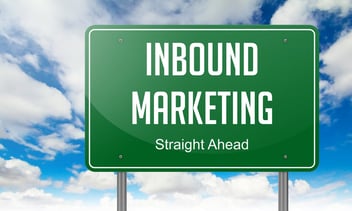The election period is always an entertaining time because it never fails to present us with interesting scenarios that reveal insights into human nature, as well as into our society’s moral inclinations.
Electoral candidates would spend millions and billions of dollars funding their campaigns in the attempt to win people’s votes. They market themselves and their platforms through different means, and these means have evolved over time.
At present, these marketing efforts appear in the form of brightly colored flyers given out by their respective volunteers in the streets, through posters bearing their names that magically appear on walls all over the nation on the day the campaign period starts. At times they are seen and heard through the radio and TV ads their PR teams arrange for them, and other times, through the fundraising dinners held in their honor that’s almost comparable to trade-shows organized in promotion of certain brands.
These are all wonderful ways of boosting the name of someone running for office. But then again, there are certain unorthodox ways electoral candidates can do to win votes. Allow us to paint you a picture.
Candidate 1 is the current City Mayor who has been running Blue City for the last few years and is again running for office, this time against the City’s largest cotton plantation owner— Candidate 2.
During his time in the office, Candidate 1 has dramatically improved Blue City. Hospitals were erected, libraries and schools were renovated, and the City’s Police Department became more responsive that crimes have been reduced. And because the city felt safer, investors came pouring in and new industries emerged providing more jobs to more people.
Candidate 2 on the other hand, didn’t mind spending tons of her fortune on her campaign.
The citizens of Blue City are a discerning group of people who valued honest and hardworking leaders. On the day of the elections, who do you think they are going to vote for?
Not counting other curious variables that may affect how this scenario will turn out, the obvious result is of course that Blue City will vote for Candidate 1— their dutiful City Mayor who has been working hard to make their City a better place in the last few years.
Candidate 2’s massive campaign efforts are similar to the more expensive traditional or outbound marketing strategies employed by previous generations of business owners. It is big on brand awareness, it gets you known immediately. But when going up against an opponent such as Candidate 1 who has worked all those years giving the people of Blue City a safe, progressive, and an incredibly happy place to live in, Candidate 2’s efforts will earn him nothing but noise.
Candidate 1 has invested in a slow but rewarding means of earning people’s votes: his projects. He did not bombard them with all those attention-grabbing ads, he showed them he is what the city needs through the websites and social media channels his team put up and maintained for him. He has continuously made the people aware of the good work he has been doing, effectively making his years in service prior to the elections, his biggest promotional tools.
Do you see where we’re getting to?
No? Alright, let’s make it a tad clearer.
Candidate 1 made use of Inbound Marketing as opposed to Candidate 2’s more aggressive and yet more expensive outbound marketing strategies.
The subjects of the story may have funny names but, these things do happen. And it shows us that even outside the realms of business and marketing, Inbound Marketing works. And today, we’re here to tell you that it is about time you, too, invest in inbound marketing.
Why Invest in Inbound?
By now you probably have already read a number of resources on the matter. But then that little voice at the back of your head isn’t satisfied with the answers you get. It’s still there, droning in the background, randomly shooting the question: why invest in Inbound, why invest in Inbound, why invest in Inbound?
It can get exhausting listening to that all day. Let us help you.
To invest in inbound marketing is a slow but rewarding experience. But those who dream of making it big and even becoming a leader in their industry, shouldn’t be deterred.
After all, beautiful things take time. Those rewarding results that you get out of slow moving strategies might just be the results that will catapult you to becoming a leading brand/company. So again, what reasons are there for you to finally decide to invest in inbound marketing?
We came up with a few! Scroll down and learn what they are!
It’s Cheaper than Going Outbound
The biggest convincing factor inbound marketing could rely on is perhaps the fact that it is relatively cheaper when compared to the strategies used in outbound marketing. You probably wonder how much does an inbound marketing campaign costs these days.
We’ll give you a look-see.
According to Mashable, inbound marketing costs 62 percent less per lead compared to outbound marketing.
A quick google search would tell you that you can spend between USD $10,000-$20,000 for inbound marketing each month, the price could be bigger depending on what sort of strategies you’re going to implement. Now that amount seems daunting but that is nothing compared to what you’d spend in typical outbound marketing strategies like TV ads which, as of the year 2022, could range from USD $100,000 to USD $8 Million, and that’s just for the production or the actual creation of the ad alone. The setup process would entail another USD$ 63,000 to USD $8 million, depending on the complexity and the length of your ad.
With Inbound Marketing, the 10 to 20 grand that you spend covers all stages– from attracting, engaging, and nurturing leads that turn into actual buyers. There are also some inbound marketing agencies that offer their services for only USD$4,000 to USD $15,000, already covering every aspect of Inbound Marketing. Really, wherever you look for answers to the question: how much does an inbound marketing campaign cost, you’d be surprised at how much cheaper it still is when compared to the strategies involved in outbound marketing.
Inbound Marketing Generates Better Leads
According to HubSpot, companies utilizing inbound marketing strategies generate 54 percent more leads compared to those who use outbound marketing.
HubSpot further reveals that in blogs alone, the average company gets to generate 55 percent more website visitors, 126 percent more leads, 97 percent more inbound links, and over 400 percent more indexed pages.
Easier to track ROI (Return of Investment)
Through those statistics alone, it is easy to see that tracking the Return Of Investments (ROI) is easier in inbound marketing compared to outbound.
In blogs, you can track if visitors have downloaded your offering, in social media channels, there are analytics that can be used to determine ROI.
Inbound marketing plays along with today’s technology, allowing you to track your ROI better.
Inbound Marketing Lets you Build Better Customer Relationship
Because Inbound Marketing is designed in a way that you have to build a relationship with your prospect right from the very beginning, over time, as they transition from being random page visitors, to actual buyers, to loyal customers– they already have a high regard for your brand, and wouldn’t want any other brand.
This process is characteristic of inbound marketing, it means that the seeds you sow today will continuously bear fruits in the years to come.
And it doesn’t stop. You generate leads even as you sleep.
In the picture we have painted above, Candidate 1 reflects the strategies of inbound marketing. He worked silently over the years, showed the people he is the leader they need, and without being disruptive at all, earned their trust. When election day arrived, they chose him. And none of Candidate 2’s noisy, aggressive and outrageously expensive outbound strategies could win over the brand that Candidate 1 has carefully instilled in the people’s minds in the last few years.
Understand how inbound marketing can help you generate leads and grow your business through our eBook. Download it today!

 Why You Should Invest in Inbound Marketing" loading="lazy">
Why You Should Invest in Inbound Marketing" loading="lazy">


